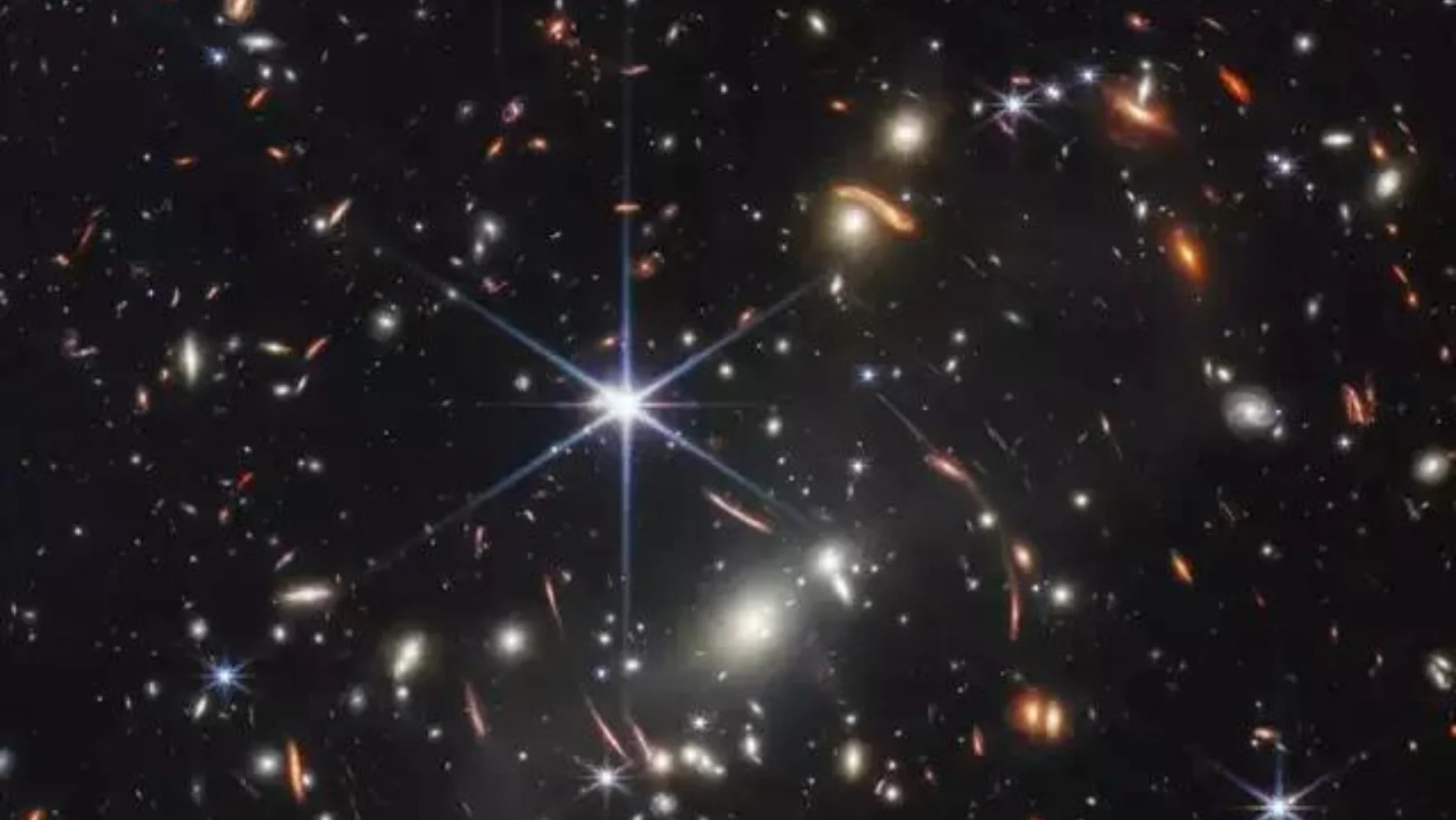First image of the universe 13 billion years ago

First image of the universe 13 billion years ago…
At first glance, it will seem like a picture of the night sky. We can see many stars in it. But the picture is colorful. And that’s the problem. Because, the picture we see by looking at the night sky, does not show so much red color. Only sometimes in the night sky do we see the reddish color of Mars.
First image of the universe 13 billion years ago. No, this is not a picture of the night sky that we see with our eyes. In contrast, the American space research agency NASA said in releasing the image that it is the deepest, sharpest, and cleanest infrared image ever taken of outer space.
The world’s most powerful and largest telescope, the James Webb Space Telescope (JWST), built by NASA, the European Space Agency, and the Canadian Space Agency, took the picture at four times the distance of the moon from Earth. In addition, US President Joe Biden unveiled this photo on August 19, 2022.
But when scattered hydrogen, helium particles, and dust are close together, the force of gravity pulls them together and condenses. The resulting heat causes the hydrogen to burn. Astronomers from first-generation stars. The process of creating a galaxy (Taramandal) began around the star. Astronomers believe that it began about 1,300 million years ago. And the picture released by NASA yesterday is a picture of a small part of the universe at that time.
100 years ago by the hand of scientist Edwin Hubble, we know that immediately after creation, galaxies are spreading around and the universe is constantly expanding. Scientist Albert Einstein states in his general theory of relativity, due to this expansion, the wavelength of the light that reaches us from a distance also increases continuously. The process converts blue light to red light continuously.
In addition, the dust around the galaxy absorbs visible light and emits infrared light. To see cosmic objects in far space, we need a space telescope that works in infrared light. The James Webb Telescope operates in such light. Thousands of scientists and engineers from the United States, Canada, and Europe placed the telescope in space in the last year after 25 years of effort.
Bangladesh is also there
Lamiya Ashraf, a team at the University of Toronto working on behalf of the Canadian Space Agency, took and analyzed the images. A member of that group is Lamiya Ashraf Mawla, who grew up in Shantinagar, Dhaka, and is a former student of Wills Little Flower School. Lamiya is currently working as a post-doctoral fellow at the University of Toronto’s Dunlop Institute of Astronomy and Astrophysics after completing his Ph.D. in Astronomy from Yale University, USA.
Media personnel spoke to an excited Lamiya after the release of the photo from NASA.
Lamiya said: I worked with the Hubble telescope during my Ph.D. research. Since then I wanted to work at James Webb. I got that opportunity.
James Webb’s camera works in the infrared part of the spectrum, which is invisible to the naked eye, the media asked him. But the color of this picture is visible?
Lamiya replied that the longest wavelength of light in the Novodudin image is marked as “red”, the middle one as “green”, and the shortest wavelength of light as “blue” to make it visible to our eyes. That is how the picture became visible to us. This work has been done through digital means.’ Any image becomes colorful with red-green-blue variations. The bright white lights in this image are stars in our galaxy. And distant galaxies are shown here as red/reddish. The nearest galaxy is 460 billion light years away and the farthest one is about 13 billion light years away.
According to NASA, if you put a grain of sand on the index finger of your hand and extend your arm toward the sky, this is a picture of the area of the sky that the grain of sand would cover. There are about 10,000 galaxies.
Astronomer Syeda Lammim Ahad, Ph.D. researcher at Leiden University in the Netherlands, and co-author of Astronomy for All, is currently in Munich, Germany. Astronomers from across Europe met there at the European Southern Observatory. Lamiya told media persons that this is one of the regions of space where galaxy clusters are high.
He easily sees Einstein’s theory of gravitational lensing in this image. In the picture, some red light is visible in some places. The fuzzy area in the middle of the image is a supermassive galaxy at the center of this galaxy cluster. Its mass has caused the surrounding space-time to bend, forming a gravitational lens. As a result, the light of the galaxy behind that galaxy is bent.
According to Lamia, James Webb’s improved camera and spectroscopy would allow for a more detailed understanding of the time period of the creation of the universe. Apart from this, not only the distant space but also the places where the planets are forming around the stars will be known in detail.
In this regard, the Bangladesh University of Engineering Professor “Farseem Mannan Mohammadi” told the media: The James Webb Space Telescope is an important milestone in space after the Hubble telescope. Because the observation range of this telescope is more than Hubble. Through this, we will be able to thoroughly know the relationship between cosmic objects and events in the past and more distant. It will undoubtedly open new horizons in astronomy and astrophysics.
Don’t forget to comment in the comment section on what you think of this post about First image of the universe 13 billion years ago.